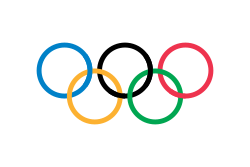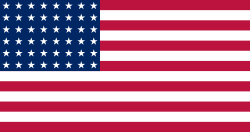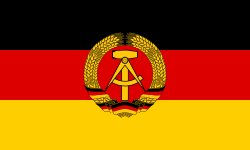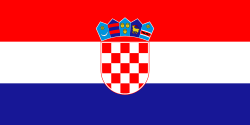Steve Redgrave
| Steve Redgrave | |
|---|---|
 | |
| Narození | 23. března 1962 (62 let) Marlow |
| Alma mater | Great Marlow School |
| Povolání | veslař |
| Ocenění | komandér Řádu britského impéria (1996) Sportovní osobnost roku BBC (2000) Thomas Keller Medal (2001) Knight Bachelor |
| Choť | Ann Redgrave |
| Web | www |
| Některá data mohou pocházet z datové položky. | |
| Přehled medailí | ||
|---|---|---|
| zlato | LOH 1984 | čtyřka s kormidelníkem |
| zlato | LOH 1988 | dvojka bez kormidelníka |
| bronz | LOH 1988 | dvojka s kormidelníkem |
| zlato | LOH 1992 | dvojka bez kormidelníka |
| zlato | LOH 1996 | dvojka bez kormidelníka |
| zlato | LOH 2000 | čtyřka bez kormidelníka |
Steven Geoffrey Redgrave (* 23. března 1962, Marlow, Spojené království) je bývalý britský veslař, držitel pěti zlatých olympijských medailí, které vybojoval na pěti po sobě jdoucích olympijských hrách. Je rovněž devítinásobným mistrem světa.
První zlato vybojoval ve čtyřveslici s kormidelníkem na olympijských hrách v Los Angeles roku 1984 (s Martinem Crossem, Adrianem Ellisonem, Andy Holmesem, Richardem Budgettem). V Soulu 1988 získal zlato na dvouveslici bez kormidelníka (s Andy Holmesem). V Barceloně 1992 zlato na dvouveslici obhájil, tentokrát ve dvojici s Matthew Pinsentem, se kterým vybojovali stejné zlato i v Atlantě 1996. Poslední zlato si připsal v Sydney roku 2000 na čtyřveslici bez kormidelníka (s Matthew Pinsentem, Timem Fosterem a Jamesem Cracknellem). Mistrem světa byl v letech 1986, 1987, 1991, 1993, 1994, 1995, 1997, 1998 a 1999.
V roce 1992 mu byla diagnostikována ulcerózní kolitida. Jako následek léčby tohoto onemocnění střev mu byl v 35 letech zjištěn diabetes.[1]
Roku 2002 byl zvolen 36. největším Britem všech dob.
Reference
- ↑ KRÁL, Rudolf. 5 slavných sportovců s diabetem [online]. Dialiga [cit. 2025-03-04]. Dostupné online.
Externí odkazy
 Obrázky, zvuky či videa k tématu Steve Redgrave na Wikimedia Commons
Obrázky, zvuky či videa k tématu Steve Redgrave na Wikimedia Commons - Oficiální stránky
- Steve Redgrave v databázi Olympedia (anglicky)
Média použitá na této stránce
Olympic Rings without "rims" (gaps between the rings), As used, eg. in the logos of the 2008 and 2016 Olympics. The colour scheme applied here was specified in 2023 guidelines.
Olympic Rings without "rims" (gaps between the rings), As used, eg. in the logos of the 2008 and 2016 Olympics. The colour scheme applied here was specified in 2023 guidelines.
Olympijská vlajka
Flag of the Germans(1866-1871)
Flag of the Germans(1866-1871)
Autor: F l a n k e r, Licence: CC BY-SA 2.5
Flag of the Kingdom of Sardinia (1851-1861) and of the Kingdom of Italy (1861-1946). Use: Civil flag and ensign. In a governmental or a military context, the crowned version (see Crowned version) was always used (as State flag and naval ensign).
Autor: F l a n k e r, Licence: CC BY-SA 2.5
Flag of the Kingdom of Sardinia (1851-1861) and of the Kingdom of Italy (1861-1946). Use: Civil flag and ensign. In a governmental or a military context, the crowned version (see Crowned version) was always used (as State flag and naval ensign).
Flag of Germany with a 3:2 ratio, instead of 3:5. The 3:2 version was used by the German Confederation and the Weimar Republic. See Flags of the World for more information.
Flag of Germany with a 3:2 ratio, instead of 3:5. The 3:2 version was used by the German Confederation and the Weimar Republic. See Flags of the World for more information.
National flag and merchant ensign of Germany from 1933 to 1935.
National flag and merchant ensign of Germany from 1933 to 1935.
US Flag with 48 stars. In use for 47 years from July 4, 1912, to July 3, 1959.
Vlajka České republiky. Podoba státní vlajky České republiky je definována zákonem České národní rady č. 3/1993 Sb., o státních symbolech České republiky, přijatým 17. prosince 1992 a který nabyl účinnosti 1. ledna 1993, kdy rozdělením České a Slovenské Federativní republiky vznikla samostatná Česká republika. Vlajka je popsána v § 4 takto: „Státní vlajka České republiky se skládá z horního pruhu bílého a dolního pruhu červeného, mezi něž je vsunut žerďový modrý klín do poloviny délky vlajky. Poměr šířky k její délce je 2 : 3.“
Vlajka České republiky. Podoba státní vlajky České republiky je definována zákonem České národní rady č. 3/1993 Sb., o státních symbolech České republiky, přijatým 17. prosince 1992 a který nabyl účinnosti 1. ledna 1993, kdy rozdělením České a Slovenské Federativní republiky vznikla samostatná Česká republika. Vlajka je popsána v § 4 takto: „Státní vlajka České republiky se skládá z horního pruhu bílého a dolního pruhu červeného, mezi něž je vsunut žerďový modrý klín do poloviny délky vlajky. Poměr šířky k její délce je 2 : 3.“
Flag of the unified Team of Germany for the Olympic Games, 1960–1968.
(c) I, Cmapm, CC BY-SA 3.0
The flag of the Soviet Union (1955-1991) using a darker shade of red.

(c) I, Cmapm, CC BY-SA 3.0
The flag of the Soviet Union (1955-1991) using a darker shade of red.

US Flag with 45 stars. In use 4 July 1896–3 July 1908. Created by jacobolus using Adobe Illustrator, and released into the public domain. This flag was used during the Spanish-American War.
US Flag with 45 stars. In use 4 July 1896–3 July 1908. Created by jacobolus using Adobe Illustrator, and released into the public domain. This flag was used during the Spanish-American War.
The Canadian Red Ensign, the national flag of Canada from 1957 to 1965. (see: the Canadian Red Ensign on the Register of Arms, Flags and Badges)
Flag of Romania, (21 August 1965 - 22 December 1989/officialy 27 December 1989).

Construction sheet of the Flag of Romania as depicted in Decree nr. 972 from 5 November 1968.
- l = 2/3 × L
- C = 1/3 × L
- S = 2/5 × l
Flag of Romania, (21 August 1965 - 22 December 1989/officialy 27 December 1989).

Construction sheet of the Flag of Romania as depicted in Decree nr. 972 from 5 November 1968.
- l = 2/3 × L
- C = 1/3 × L
- S = 2/5 × l
Při zobrazení tohoto souboru lze snadno přidat orámování
Flag of the Socialist Federal Republic of Yugoslavia (1946-1992).
The design (blazon) is defined in Article 4 of the Constitution for the Republic of Yugoslavia (1946). [1]
Flag of the Socialist Federal Republic of Yugoslavia (1946-1992).
The design (blazon) is defined in Article 4 of the Constitution for the Republic of Yugoslavia (1946). [1]
The Canadian Red Ensign used between 1921 and 1957.
This image has compared for accuracy (mainly colors) using an image from World Statesmen. The only change is making the maple leaves green from red. This image has compared for accuracy (mainly colors) using an image from World Statesmen. The most recent version of this image has changed the harp into one with a female figure; see [http://flagspot.net/flags/ca-1921.html FOTW
Autor:
- Steve_Redgrave_20110525.jpg: Phil Guest
- derivative work: MachoCarioca
Sir Steve Redgrave, British Olympic athlete, on stage in Salisbury, England.
The Canadian Red Ensign used between 1921 and 1957.
This image has compared for accuracy (mainly colors) using an image from World Statesmen. The only change is making the maple leaves green from red. This image has compared for accuracy (mainly colors) using an image from World Statesmen. The most recent version of this image has changed the harp into one with a female figure; see [http://flagspot.net/flags/ca-1921.html FOTW
The Canadian Red Ensign, the national flag of Canada from 1957 to 1965. (see: the Canadian Red Ensign on the Register of Arms, Flags and Badges)




























